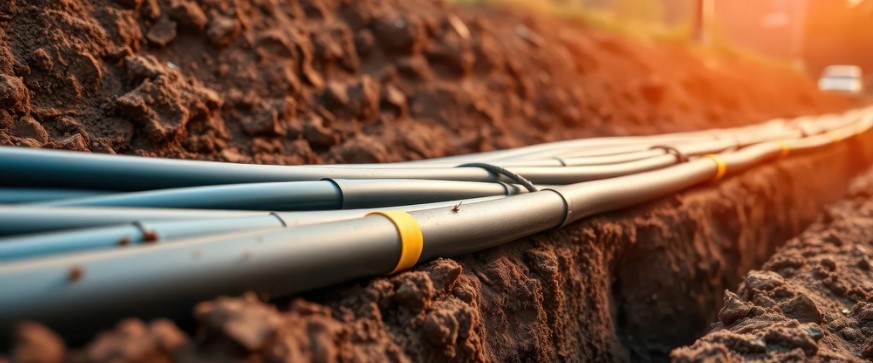America’s energy grid is in need of major upgrades. As we work to shift towards renewable energy and rebuild our infrastructure, going underground may hold the key. According to experts over at Commonwealth, installing underground transmission lines could make our energy cleaner and more reliable.
Why Go Underground?
There are two major advantages to moving vital infrastructure underground. First, it is more resistant to weather events that are becoming more extreme with climate change. Aboveground power lines are vulnerable to damage from storms, flooding, ice, wind, and wildfires. Burying lines protects them. Second, it reduces risks to the public and improves reliability. Trees falling on lines cause almost a quarter of all power outages. Animals and vehicles crashing into utility poles are also issues. Taking lines underground eliminates these problems.
Overcoming Obstacles
Cost is not the only barrier to expansion of underground transmission. While it solves some grid reliability issues, other concerns emerge. Cables heat up more when buried and require expensive cooling systems so that they do not overheat. Repairing underground lines also takes longer than overhead lines. Finally, projects must carefully route buried lines to avoid existing sewers, gas pipes, and subway tunnels underneath crowded cities and towns.
Despite these genuine challenges, none are deal breakers that outweigh the benefits of underground transmission. Continued innovation and investment can overcome them. Cooling technologies will advance. Automated systems to quickly pinpoint damage will aid faster repairs. Improved horizontal drilling techniques will help navigate tight underground spaces. The only question is how quickly it can scale.
Signs of Progress
Promising developments suggest a new wave of growth lies ahead for America’s underground grid. U.S. utilities already bury over 60% of all new distribution lines. Large transmission projects are breaking ground too. Multi-billion-dollar megaprojects showcase leading-edge high voltage cable technologies. They also highlight the major investments needed to upgrade infrastructure. Although costs are currently high, it is anticipated that they will decrease as techniques improve and more projects are undertaken, leading to economies of scale and increased efficiency.
The Local Level
To rebuild the grid, we need to build massive new transmission lines spanning multiple states and upgrade local distribution systems. Cities and towns maintain their own neighborhood electricity infrastructure that directly serves homes and businesses. Like larger utilities, they recognize the need to strengthen grids against extreme weather by burying lines.
The Road Ahead
A complete transformation of America’s massive energy infrastructure requires a multi-decade, trillion-dollar investment. This need, though, is clear and urgent. Climate change makes aboveground power lines increasingly vulnerable, while at the same time the country remains heavily reliant on fossil fuels. Clean energy expansion depends on linking extensive wind and solar farms over long distances.
The solution to both problems is a smarter, more resilient underground grid. This also provides added advantages. Construction creates lots of skilled jobs that cannot be automated or outsourced. Local businesses also benefit from the economic activity. Ultimately, communities of all sizes win when the lights stay on in more extreme weather. People may not ponder the hidden systems delivering their electricity, but they will appreciate the peace of mind underground lines provide.
Conclusion
The transformation is already underway in places as transmission projects break new ground with advanced techniques. Meanwhile, forward-looking towns and cities take the initiative to harden their own neighborhood grids. Linking these pockets of progress is crucial to building out a fully modern energy system nationwide. The challenges ahead are as extensive as the miles of lines crossing America. But the power lies below the surface to see it through and bring greater security to the communities above.

